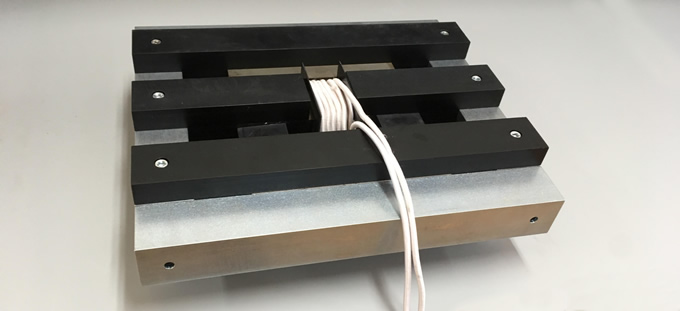Fuel-less Generator Could Change The Energy Industry
Imagine having your house, car, computers, and business powered by a compact fuel-less device that never runs down or wears out. Such an apparatus would offer significant benefits both economically and ecologically. The electric grid and charging stations would be obsoleted and the corner gas station would eventually disappear.
Man-made pollution would be reduced. The near-term disruptions in the oil, coal, solar, and nuclear energy utility sectors would be offset by the overall gains provided by no-charge, distributed electrical power. New job opportunities would emerge.
Impossible? A small R&D company, Transducing Energy Devices, LLC, (TED) located in Ann Arbor, Mich., thinks it is possible and has data and simulations to prove it. The company has been working for years on a fuel-less electricity generating device, called the Permanent Magnet Induction Generator (PMIG). About two years ago, TED received a $1M investment, which permitted substantial R&D progress.

The PMIG’s pioneering developer, Ted Annis, believes he’s on the verge of a major breakthrough that could ultimately create sweeping change in the energy industry.
“A successful PMIG could decentralize the production of electricity, eliminate the electric grid, and replace most of the energy sources and energy equipment worldwide,” says Annis, principal investigator, manager and co-founder of Transducing Energy Devices http://www.tedmagnetics.com). “Because R&D to date indicates sufficient power to be usable in most energy applications (e.g., automobiles, houses, boats), the use of fossil fuels, fossil fuel engines, wind, solar, nuclear reactors, and the electrical power grid would be obsoleted. Each house and automobile would have a PMIG. Our infrastructure's present vulnerability to an attack on the grid would be greatly diminished.”
Annis says an average gross power output of 100 kW is indicated in simulations, which is more than enough to power a car or a house. The physical prototype is about 75 pounds and was designed and constructed without the key component part needed for successful operation – similar to building an automobile without a completed engine design, which is a common practice.
In March 2018, the R&D for this key component part was completed.
Annis realized that this component part, which is quite small, could stand alone and be the basis of a permanent magnet oscillator (PMO). He interrupted the work on the PMIG to examine that possibility.
Within three weeks, a virtual version of a PMO was achieved. It oscillates magnetically, producing a voltage in a pickup coil.
“I was thrilled to see it go into oscillation without being nudged by a starting pulse,” said Annis. “The implications are huge. Think of a magnetic battery for your iPhone, iPad, or laptop that never needs charging.”
Budget constraints are forcing the company to decide whether to complete the construction of the PMIG, pursue the PMO, or go all-out to raise additional investment while pausing development of both.
“The major fundraising obstacles encountered have been a disbelief that a system containing magnets can be used in magnetic energy-to-electric-power conversion and an incorrect understanding of the first law of thermodynamics,” Annis said.
The website http://www.tedmagnetics.com addresses these thoughts in its FAQs section.
About Transducing Enery Devices LLC
Transducing Energy Devices is a Michigan LLC that was formed in 2005 for the specific purpose of performing R&D for the creation of an over-unity electrical energy device.
About Ted Annis
Ted Annis (http://www.tedmagnetics.com) is the manager and co-founder of Transducing Energy Devices, LLC, which is engaged in the research and development of a fuel-less electricity energy device. He received a BS in physics and an MBA at Xavier University. He formerly was with Ford Motor Company and was CEO and co-founder of SupplyTech, Inc.
Comments (0)
This post does not have any comments. Be the first to leave a comment below.
Featured Product

